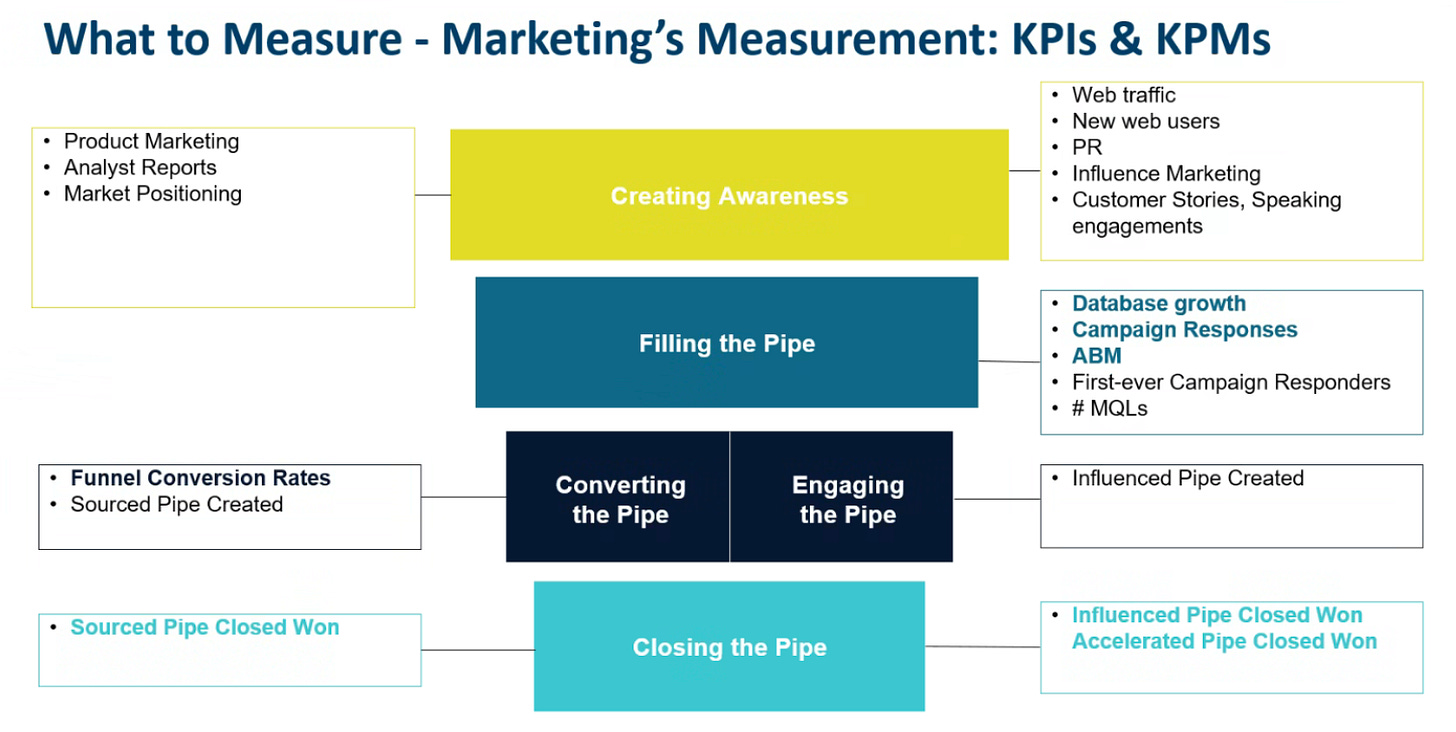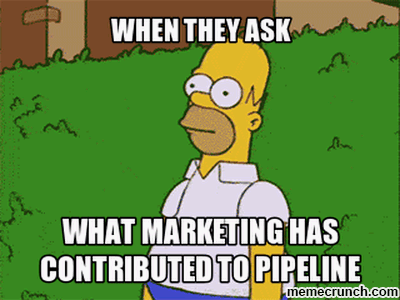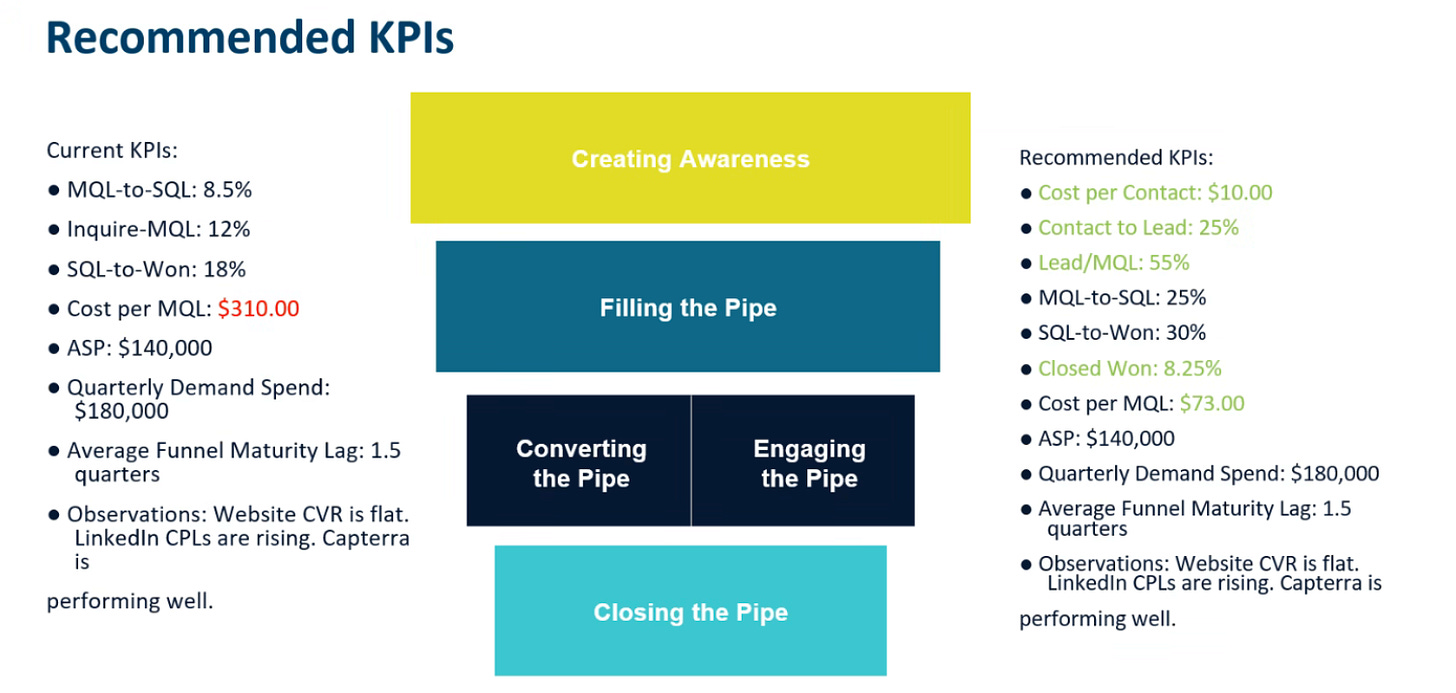Building a High-Impact Demand Generation Strategy
One of my favorite partners in GTM is working with demand generation leader. Generating demand is not just about driving leads. It is about building a full-funnel engine that aligns marketing efforts with measurable pipeline and revenue outcomes. Demand generation is more than just top-of-funnel activities. At it’s best it’s an orchestrated strategy that supports the entire buyer journey, from the first brand impression to closed won bookings.
Revenue Operations leaders are increasingly tasked with aligning cross-functional stakeholders and operationalizing this strategy. To do that effectively, they need a comprehensive understanding of what to measure, how to measure it, and how each stage of the funnel contributes to the broader revenue motion. The true value of demand generation is realized when marketing performance is clearly tied to pipeline growth and revenue attainment.
But first a word from our sponsors:
RevOps chaos slowing you down? Juggling disconnected tools, manual reports, and clunky workflows kills productivity and revenue. Zapier automates your processes, seamlessly integrating your sales, marketing, and RevOps stack—so you can focus on growth, not busywork. Start automating today and turn inefficiency into impact. Try Zapier now!
The visual framework presented here breaks down marketing KPIs and KPMs into five primary stages:
Creating awareness,
Pipeline filling
Pipeline conversion
Engagement
Closing
Each stage carries its own metrics, tactics, and RevOps implications. Let’s get into it.
Creating Awareness
Creating awareness is the step one. In this stage, marketing focuses on generating visibility, trust, and interest across the market. Remember, the objective is not immediate lead capture but brand recognition, education, and positioning. Cost per opportunity with these types of campaigns are going to be higher than your demand conversion channels. B2B buyers often require multiple touchpoints before they are ready to engage with sales. That journey begins with awareness.
This stage includes top-of-funnel initiatives such as:
Product marketing and messaging frameworks
Analyst relations and third-party validation
Content marketing including blogs, newsletters, and videos
Speaking engagements at conferences or webinars
Customer stories and PR placements
Metrics in this stage often include web traffic, growth in new web users, PR and earned media impressions, and social media reach. These indicators reflect how well the brand is expanding its visibility and resonating with key audiences.
Imagine a SaaS company launching a new product category. Their marketing team partners with an analyst firm to publish a positioning report and coordinates a series of webinars featuring industry thought leaders. In parallel, they launch a series of blog posts and customer case studies. They track earned media, monitor web traffic spikes from referral sources, and measure speaking engagement reach. Although these activities may not yield immediate MQLs, they play an important role in educating the market and driving future interest.
Operationally, RevOps supports this stage by ensuring tracking infrastructure is in place. Attribution models must begin here, capturing first-touch engagements. Web analytics, UTM parameters, and CRM-integrated tracking links ensure that awareness efforts feed into downstream reporting. Content performance dashboards and brand sentiment analysis help marketing teams understand which messages resonate and where further investment is needed.
More advanced teams also invest in share-of-voice (SOV) tracking, brand health surveys, and account-level engagement analytics. These insights can shape targeting and budget allocation across the rest of the funnel.
Filling the Pipe
Once awareness is established, the focus shifts to generating qualified interest. This is where lead capture, database growth, and campaign responsiveness become central. The "Filling the Pipe" stage measures how effectively marketing converts awareness into tangible pipeline potential.
Highlighted metrics in the framework include:
Growth in the lead and contact database
Responses to marketing campaigns (form fills, webinar sign-ups, content downloads)
Performance of account-based marketing (ABM) initiatives
Identification of first-time campaign responders
Number and quality of MQLs generated
Filling the pipe requires a well-integrated marketing stack and clear campaign orchestration. For example, a company might run an ABM campaign targeting mid-market finance leaders. They use a combination of LinkedIn ads, custom landing pages, personalized email nurtures, and direct mail. A gated ROI calculator is offered to encourage engagement. Success is measured by campaign response rates, net-new contacts added to the CRM, and follow-up meetings booked by SDRs.
RevOps / MOPs enables this stage by implementing and managing lead scoring models that determine when a contact becomes an MQL. They maintain lead routing rules to ensure leads are assigned quickly and correctly. RevOps also ensures that lead sources, campaign IDs, and UTM parameters are consistently captured and integrated into Salesforce or HubSpot for downstream reporting.
A common challenge here is balancing lead volume with lead quality. Over-generating low-quality leads clogs SDR capacity and erodes trust in marketing. This is where clear MQL definitions, feedback loops (YES!) with sales, and ongoing scoring model refinement are essential.
Advanced marketing teams use intent data platforms to supplement lead gen programs. These tools provide signals that help prioritize accounts based on research behavior, indicating real buying interest. Combining intent signals with behavioral scoring leads to more accurate qualification and better SDR outcomes.
Converting and Engaging the Pipe
After leads are captured, the next challenge is progressing them into sales pipeline. This phase bifurcates into two critical stages: converting sourced leads into opportunities and engaging influenced leads to keep momentum alive.
Conversion activities focus on the first meaningful sales engagement. This typically involves SDR outreach, lead qualification calls, follow-ups from events, and targeted nurture sequences. The goal is to move leads from MQL to SAL (Sales Accepted Lead) and eventually to SQL (Sales Qualified Lead).
Engagement efforts ensure that leads do not stall. Marketing continues to deliver value through remarketing ads, curated content journeys, webinars, and product trials. These tactics help educate the buyer, build consensus within the buying group, and keep the vendor top-of-mind.
Metrics to track include:
MQL-to-SQL conversion rate
Opportunity conversion rate from sourced leads
Influenced pipeline creation (opportunities where marketing played a supporting role)
For example, a marketing campaign might generate 500 MQLs. If only 25 of those become opportunities, the conversion rate is 5 percent. That may signal misaligned targeting or ineffective follow-up. Similarly, an opportunity that originated from a partner referral may still be influenced by marketing through product demos, case studies, and email nurtures. That influenced engagement should be captured and credited appropriately.
RevOps supports these stages through:
CRM funnel design and stage progression logic
SDR enablement dashboards that show lead velocity
SLA monitoring between marketing, SDR, and sales teams
Multi-touch attribution frameworks that credit marketing engagement throughout the lifecycle
One of the most important tools in this stage is a funnel conversion report that breaks down lead progression by channel, campaign, and lead source. These reports can identify where high-performing programs exist and where drop-offs need investigation. Teams often find that certain lead sources generate lots of engagement but fail to convert. This insight helps with campaign budget allocation and prioritization.
Looking to improve the metrics takes ito consideration where to drive improvement. For example below. Driving improvements in any of the core metrics is going to improve the marketing contribution to customer acquisition cost. A clear signal of this would be an improved Cost per MQL and Cost per Opportunity metric.
Closing the Pipe
The final stage in the demand generation engine is turning opportunities into revenue. This is where marketing's influence is often hardest to measure but most critical to growth. Closing the pipe involves helping sales accelerate deals, build buyer confidence, and reduce competitive risk.
Key tactics include:
Customer advocacy content and ROI calculators
Sales enablement content libraries
Executive roundtables and late-stage events
Custom deal acceleration campaigns for strategic accounts
The metrics that matter here are:
Sourced pipeline closed won
Influenced pipeline closed won
Accelerated deal cycle duration (time from opportunity to close)
Suppose marketing launches a late-stage program that offers a personalized TCO (total cost of ownership) calculator and sends a case study package to all open opportunities in a specific segment. If five deals close within 30 days of those touches, and historical close time was 90 days, marketing can credibly demonstrate influence and acceleration.
RevOps operationalizes this insight through attribution reporting and opportunity tagging. Campaign influence models like W-shaped or custom multi-touch logic help determine how marketing impacted the deal across the funnel. Integrating engagement data can also show content consumption tied to revenue outcomes.
Sales and marketing alignment is essential in this stage. Teams should run regular deal reviews that highlight which marketing programs are helping move deals forward. RevOps can structure these reviews using win/loss analysis, pipeline aging reports, and content influence dashboards.
Making It All Measurable
Demand generation strategies are only as good as the systems that support measurement. KPIs tell you how you are performing. KPMs indicate progress toward strategic milestones. Both are needed to manage the funnel effectively.
Best-in-class RevOps teams build dashboards for each funnel stage:
Awareness dashboards tracking traffic, engagement, and share-of-voice
Pipeline dashboards segmented by source, product line, and persona
Conversion dashboards highlighting funnel progression by campaign and channel
Revenue dashboards tying marketing engagement to closed-won deals
A common framework includes:
Attribution model standardization (first-touch, last-touch, multi-touch)
Consistent campaign naming conventions and hierarchy
Stage definitions with documented criteria for MQL, SAL, SQL, and Opportunity
SLA tracking for lead handoffs, follow-up times, and contact cadence
A major pitfall is focusing too heavily on vanity metrics. High click through rates or large social followings mean little if they do not translate to revenue. RevOps helps marketing move from activity-based metrics to impact-based metrics.
Cross-functional alignment is critical. Marketing, SDR, and Sales leaders should agree on measurement frameworks and review dashboards regularly. RevOps can also invest in ongoing enablement to ensure all teams understand what is being measured and why.
Bringing It All Together
A well-functioning demand generation strategy requires a full-funnel approach. Optimizing for lead volume at the top while neglecting mid and bottom of funnel execution leads to wasted spend and misaligned teams. Each team must understand its role in the funnel and be held accountable for specific outcomes.
The KPI/KPM framework provides a clear structure to evaluate where marketing is driving impact. From creating awareness to closing deals, each stage has measurable contributions. Revisit and refine your framework regularly. As your business evolves: new products, buying behavior changes, and technology advances, so must your approach to demand generation. Periodic audits help identify gaps, test new tactics, and ensure alignment with company goals.
Companies that do this well operate with a level of precision that enables scalable growth.
Go forth and operate 👋 (if you’re not following me on LinkedIn already please come find me here)
Demand Generation paid template below
Keep reading with a 7-day free trial
Subscribe to RevOps Impact Newsletter to keep reading this post and get 7 days of free access to the full post archives.





